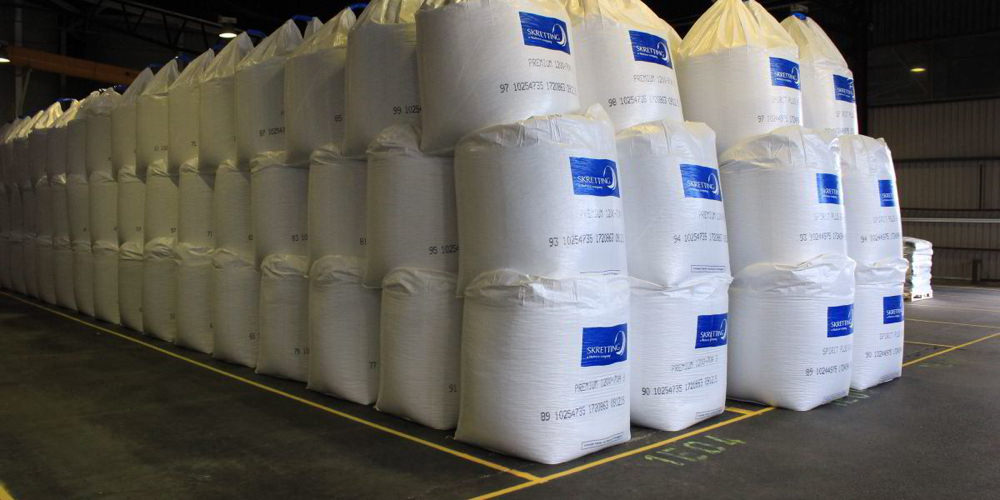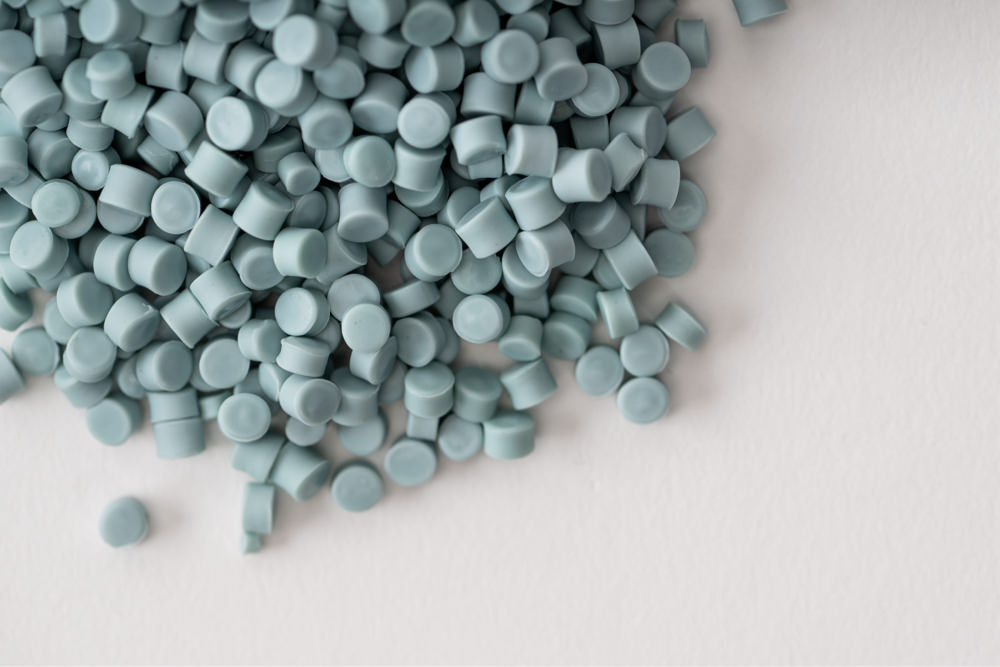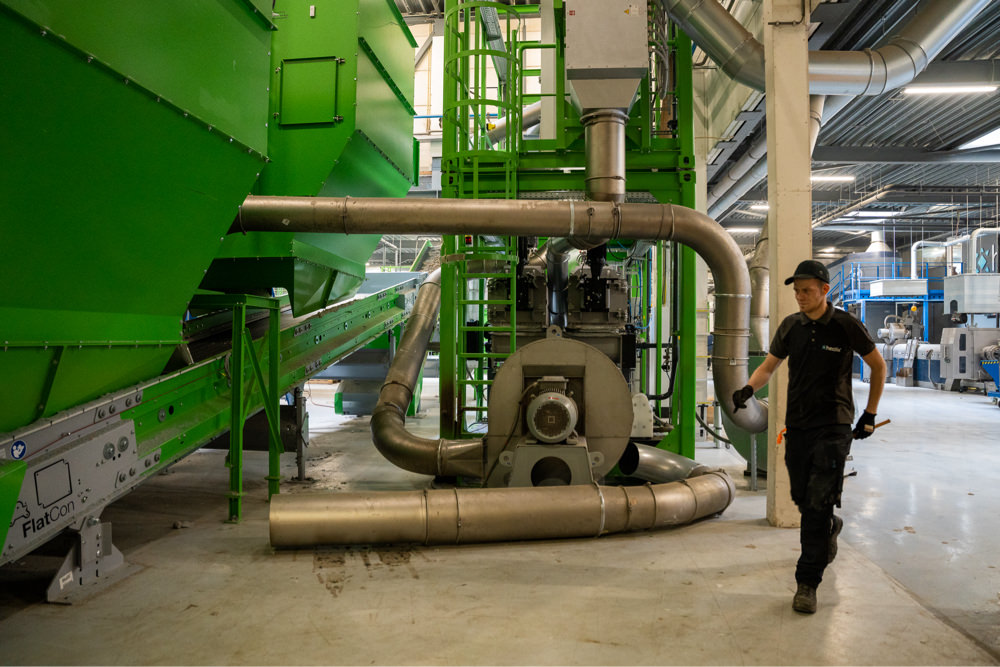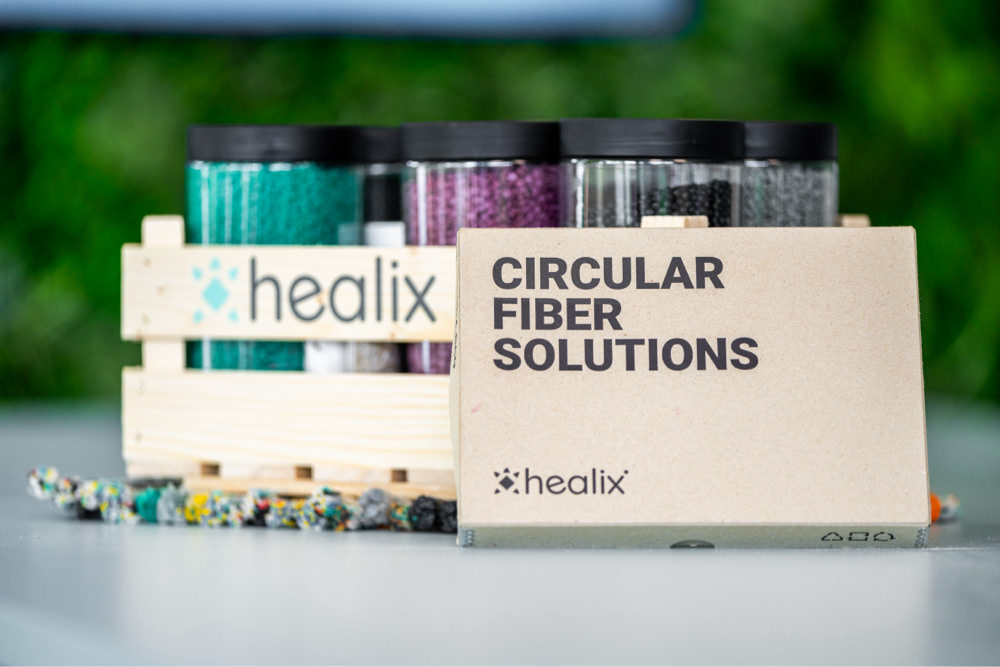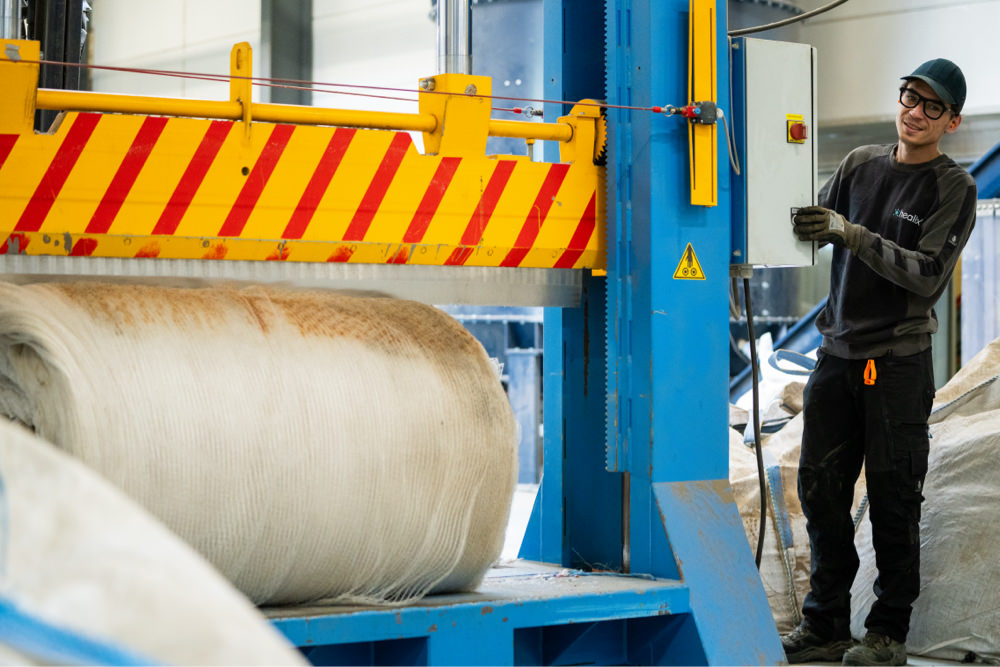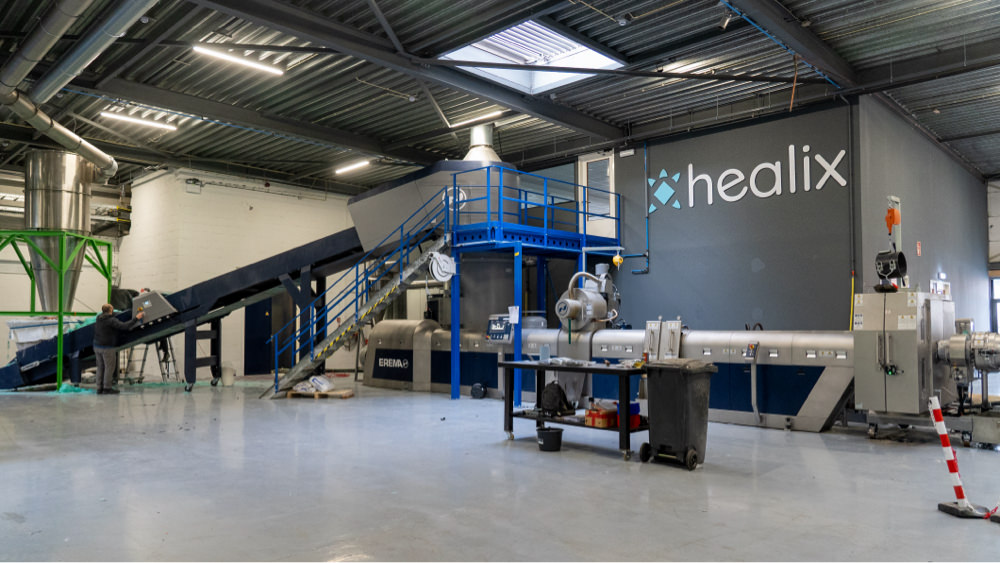Recycling Services at Healix
Healix is dedicated to providing a broad spectrum of recycling services, designed to address the varied needs of our customers. We are committed to assisting our partners in tackling their plastic waste challenges, transforming plastic waste into certified circular plastics with our cutting-edge purification technology. This ensures complete traceability and custody of the feedstock throughout the recycling journey.Technology
The combination and sequence of our machines, and specific features of the equipment used to recycle plastic fiber waste into performance polymers, in combination with the skill set and experience of our people is unique and allow us to recycle plastic fiber waste into high-quality polymers, that they can be used again to make new ropes, nets and big bags.
From the storage location the material enters the recycling process. To allow for space efficient transport most waste materials are pressed into bales or transported in bulk packaging.
As the process requires a continuous and homogeneous feed of loose material with a limited thickness, the dense bales and bulk packages are first broken apart. This also allows for inspection of the individual contents of the incoming bulk packages. The bulk material is loaded on a loader-feeder platform and into the feed hopper. In the feed hopper the bales are opened up and fed to the conveyer belt that transports the material to the chopper/cutting equipment.
Since post-consumer waste can be heavily contaminated with organic waste e.g. marine fouling, soil/sand, grass and other non-plastic waste, a first pre-cleaning and sorting step is conducted prior to feeding the material to the shredder and the washing process. Pre-cleaning and sorting at an early stage in the process has several advantages: Firstly, it removes contamination that could otherwise lead to increased wear and abrasion of the cutter/chopper knifes and components. Secondly, it reduces to amount of contamination that is released to the water in the washing step of the process. This reduces the efforts for water purification and reduces the ‘wet’ waste streams, called sludge.
After the pre-sorting/cleaning, the product must be reduced in size. This is especially relevant for long fibrous materials like twines, yarns and ropes, as they can cause problems further downstream in the process when in sufficiently shredded. In addition, reduced particle size often result in a better surface/volume ratio, hence easier to clean.
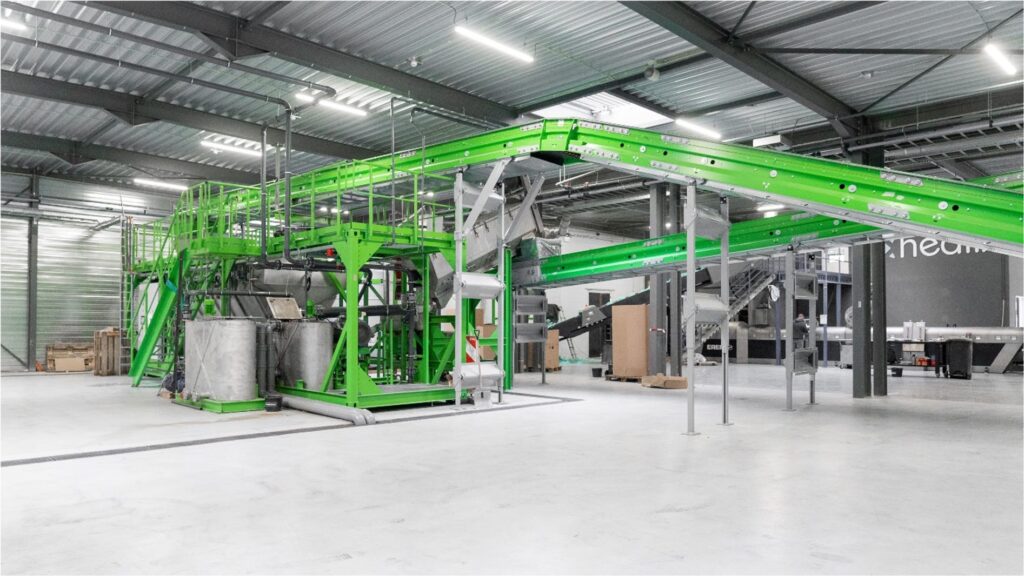 Once the material has been sorted and chopped into smaller particles it can be transferred to the cleaning segment of the recycling line, where the goal is to remove and extract all contamination, (organic and non-organic) that is attached to the plastic particles and entrapped within the fibrous plastic waste.
The use of resources during the process is equally important: we minimize water consumption by purifying it, by doing so the water cleaning process can be made closed loop. This is a crucial feature as it pertains to the mission of contributing to the environment.
For materials of different low diameter fibers, like e.g. ropes, nets and textiles, there is a high likelihood that contamination is entrapped between the individual filaments or in the remaining construction of the assembly. After mechanically washing the product structure and adherence is further destroyed, this allows entrapped particles to be released. To remove these released particles from the product stream, separation is required. With different separation methods the main material can be isolated from the rest. The post-cleaned material is then transferred, via a buffer storage, to the compounding section of the production line where it will be further processed.
Once the material has been sorted and chopped into smaller particles it can be transferred to the cleaning segment of the recycling line, where the goal is to remove and extract all contamination, (organic and non-organic) that is attached to the plastic particles and entrapped within the fibrous plastic waste.
The use of resources during the process is equally important: we minimize water consumption by purifying it, by doing so the water cleaning process can be made closed loop. This is a crucial feature as it pertains to the mission of contributing to the environment.
For materials of different low diameter fibers, like e.g. ropes, nets and textiles, there is a high likelihood that contamination is entrapped between the individual filaments or in the remaining construction of the assembly. After mechanically washing the product structure and adherence is further destroyed, this allows entrapped particles to be released. To remove these released particles from the product stream, separation is required. With different separation methods the main material can be isolated from the rest. The post-cleaned material is then transferred, via a buffer storage, to the compounding section of the production line where it will be further processed. Plastics extrusion is a high-volume manufacturing process in which raw plastic is melted and formed into a continuous profile. This process starts by feeding the cleaned and dried fiber from the buffer storage to a hopper into the barrel of the extruder (1,2). The material is gradually melted by the mechanical energy generated by extruder screws (3) and by heaters arranged along the barrel.
In this process the melt passes the melt-filter and is then degassed (6) in order to extract unwanted gasses that are formed during the melting process. The molten polymer is then forced into a die and pelletizer unit (8), which shapes the polymer into a shape that hardens during cooling.
For optimal transport and processing of the recycled material by our customers, small sized plastic pellets are preferred over long, semi-continuous, polymer extrusions. Therefore pelletizing plays an important role in the recycling process. For pelletizing, the extruded polymer melt emerging from the holes in the heated pelletizer die face are cut off by rotating knives (2). The pellets are flung outward by the centrifugal force into a rotating water ring (3). This cools the pellets and transports them via a flexible discharge channel to the to the pellet water removal screen (4). The pellets pass through the oversize particle separator to the drying centrifuge.
The produced pellets are then conveyed in a stream of air through a transport duct/conveyer to the silo or bagging station, where the big bags are filled, labeled, stacked on pallets and transferred to a temporary storage location (preferably on-side) prior to shipment.

Our Partnership in Action
LC Packaging
In our collaboration with LC Packaging, a company renowned for its Flexible Intermediate Bulk Containers (FIBCs) or “big bags,” we see sustainability in motion. LC Packaging has woven sustainability into the fabric of its business model with a vision to eliminate waste. By choosing to partner with Healix, they’ve taken a significant step toward leading the sustainable packaging sector. They supply us with used big bags, which we recycle into certified circular polymers, enabling LC Packaging to produce and promote circular big bags via a closed loop system. This cycle underlines our shared commitment to a sustainable future.

Solmax
Solmax, a manufacturer of geotextiles used primarily for creating temporary roads for wind farms, has partnered with Healix to address the lifecycle of their products. Traditionally, these materials, which have a lifespan of 2 to 3 years, were discarded. Together, we’ve devised a way to recycle these geotextiles into circular plastic, which is then used to produce new geotextiles for the same application. This partnership highlights our innovative approach to recycling and reusing materials, underscoring our commitment to sustainability and the circular economy.
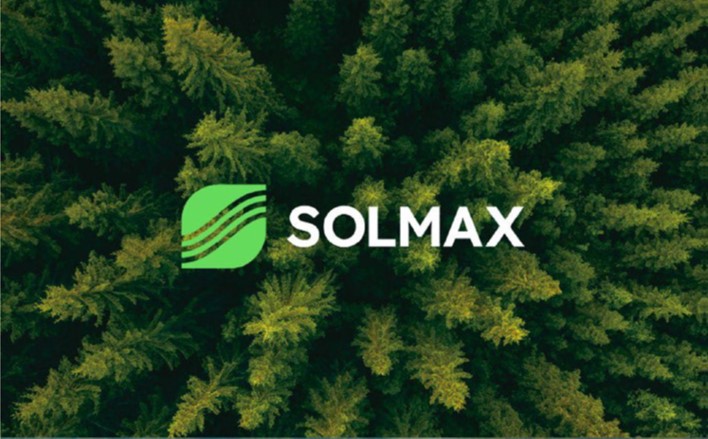
AION
AION is revolutionizing how fish feed is managed post-consumption. Typically housed in big bags made from durable materials like woven polypropylene, these containers often become waste. AION’s service model focuses on circularity as a service, collecting these used big bags from salmon farmers. At Healix, we transform them into granulate, which then serves as the raw material for pallets. These pallets are returned to the salmon farmers, creating a sustainable loop that exemplifies environmental responsibility by keeping plastics in use and out of nature.
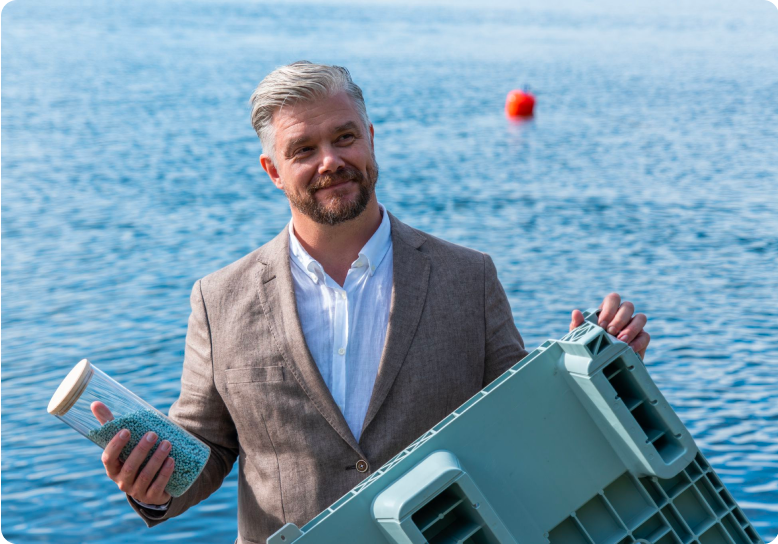
Why Partner with Healix?
Claim Your Fame: Recycle your materials with Healix and leverage your brand’s commitment to sustainability by selling recycled products under your own label.
Customer Benefits
Partnering with Healix allows your customer to:
- Reduce their reliance on fossil resources
- Prepare for future environmental regulations
- Contribute to solving the plastic pollution crisis
- Achieve significant CO2 emissions savings
- Enhance their brand’s image

Quality Control at Healix
At Healix, we understand the critical importance of maintaining the highest standards of quality and consistency in the production of our certified circular polymers. Our advanced purification technology allows us to transform plastic fiber waste, particularly from fishing and farming, into pristine and certified circular polymers that meet rigorous industry standards and regulations.
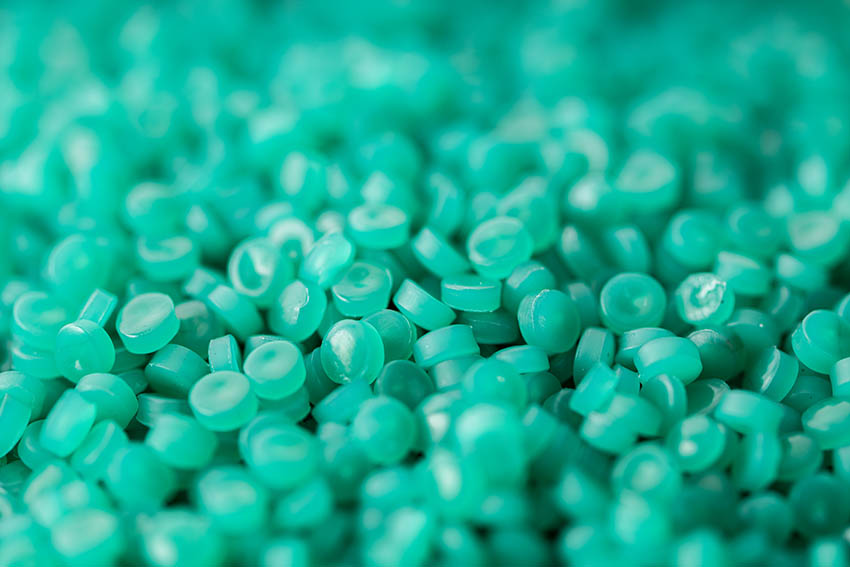
We emphasize the significance of quality control in every stage of our production process. To ensure the quality and consistency of our Healix® polymers, we conduct thorough testing and analysis using state-of-the-art equipment and industry-approved methodologies. Our commitment to quality control is reflected in the following key measures:
- Meltflow Index: Our polymers are meticulously tested for melt flow index in accordance with ISO 1133-1 standards, ensuring consistency and performance in various applications.
- Density: We adhere to ISO 1183-1 standards to verify the density of our polymers, ensuring precise and reliable measurements for quality assurance.
- Ash Content: The ash content of our polymers is rigorously assessed in compliance with ISO 3451-1/A/600°C standards, ensuring purity and suitability for diverse industrial applications.
- Volatiles: We conduct testing based on ASTM D6980 @ 120°C to measure volatiles, ensuring the stability and safety of our polymers in specific operating conditions.
- DSC (Differential Scanning Calorimetry): Our polymers are subjected to DSC analysis in accordance with ISO 11357-3 standards, enabling precise characterization of thermal properties for consistent performance.
- FTIR (Fourier Transform Infrared Spectroscopy): We utilize FTIR analysis to validate the chemical composition and molecular structure of our polymers, ensuring compliance with industry standards and requirements.
These comprehensive quality control measures demonstrate our unwavering commitment to delivering Healix® polymers of exceptional quality and consistency. By adhering to these stringent protocols, we uphold our promise to provide eco-friendly PE and PP raw materials that contribute to reducing CO2 emissions, eliminating the use of virgin plastics, and promoting EU compliance.
We take pride in our commitment to full traceability and sustainability. Our production process is EUCertPlast certified, ensuring that our circular polymer is derived from verified post-consumer plastic fiber waste. This certification not only demonstrates our dedication to environmental responsibility but also provides our customers with the assurance that our products meet the highest standards of quality and sustainability in the industry. With full traceability and EUCertPlast certification, our customers can trust in the provenance and integrity of our product, supporting their own sustainability goals and contributing to a more sustainable future.
Join Us in Our Mission
Our certified circular polymers are not just materials – they are a testament to our vision of keeping plastic in the economy, out of the environment, and ultimately safeguarding our oceans and farmlands for future generations.
Discover more about our processes and how your company and customers can benefit from partnering with Healix.
